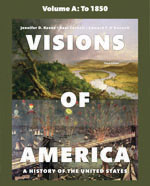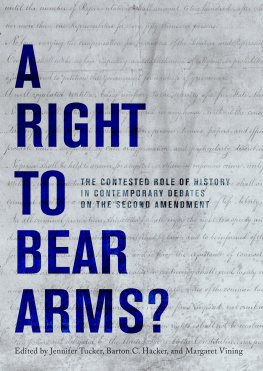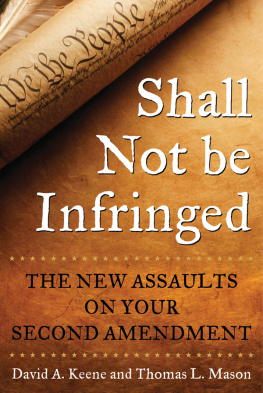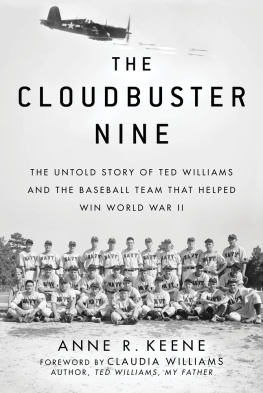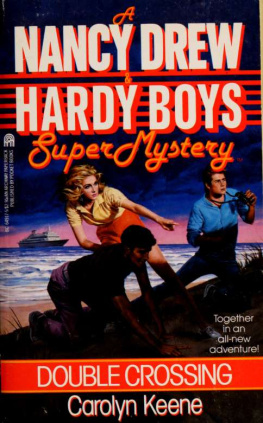Jennifer D. Keene - Visions of America: A History of the United States
Here you can read online Jennifer D. Keene - Visions of America: A History of the United States full text of the book (entire story) in english for free. Download pdf and epub, get meaning, cover and reviews about this ebook. year: 2016, publisher: Pearson, genre: History / Science. Description of the work, (preface) as well as reviews are available. Best literature library LitArk.com created for fans of good reading and offers a wide selection of genres:
Romance novel
Science fiction
Adventure
Detective
Science
History
Home and family
Prose
Art
Politics
Computer
Non-fiction
Religion
Business
Children
Humor
Choose a favorite category and find really read worthwhile books. Enjoy immersion in the world of imagination, feel the emotions of the characters or learn something new for yourself, make an fascinating discovery.
- Book:Visions of America: A History of the United States
- Author:
- Publisher:Pearson
- Genre:
- Year:2016
- Rating:5 / 5
- Favourites:Add to favourites
- Your mark:
- 100
- 1
- 2
- 3
- 4
- 5
Visions of America: A History of the United States: summary, description and annotation
We offer to read an annotation, description, summary or preface (depends on what the author of the book "Visions of America: A History of the United States" wrote himself). If you haven't found the necessary information about the book — write in the comments, we will try to find it.
Visions of America: A History of the United States — read online for free the complete book (whole text) full work
Below is the text of the book, divided by pages. System saving the place of the last page read, allows you to conveniently read the book "Visions of America: A History of the United States" online for free, without having to search again every time where you left off. Put a bookmark, and you can go to the page where you finished reading at any time.
Font size:
Interval:
Bookmark:

Listen to the Audio
Now in its third edition, Visions of America offers its pathbreaking visual pedagogy within a state-of-the-art learning technology, delivering the most effective learning program for instructors and students in the U.S. Survey course.
Using images as primary historical evidence, Visions of America brings history to life for a generation of visual learners and shows how key choices and competing visions of America shaped our nations past.
We conceived of Visions of America while teaching in the kinds of classrooms familiar to most of the instructors and students who will use this digital product.
We live in an intensely visual culture, and students are always fascinated to discover the truth about the images they have long associated with key periods in American history, or to learn about new ones. Images have powerfully influenced national debates, but history titles typically use them as mere illustrations. Our approach is different. We selected the nearly 700 paintings, photographs, line drawings, woodcuts, advertisements, engravings, film stills, political cartoons, and other images in the text. Each one is discussed and treated as historical evidence. Our innovative design integrates images across the screens in a way that shows detail and invites scrutiny.
Many of our students have an incomplete view of history. Students often see history as a series of events that unfolded as if preordained. The colonists defeated the British; the Civil War held the Union together and abolished slavery; America defeated Nazi Germany and then prevailed in the Cold War. Yet as historians we know that history is never inevitable, that vehement disagreements have shaped the past and continue to influence the present, that events are driven by choices, and that outcomes are unknowable to those who make those choices. We wrote Visions of America to make those perceptions just as obvious to our students.
History professors and historical narratives need to be good storytellers. Visions of Americas lively writing styleactive, engaging, and full of anecdotesbrings history to life. Students will enjoy reading content that shows them history is a living vibrant narrative open to interpretation and the product of decisions people made in the past. Long after they finish the course, students may not recall the exact terms of the Versailles Treaty or the Reconstruction Acts, but they will remember that people making individual choices are the driving force of history. When participating in the political or cultural debates of their own era, they will recall that competing visions have been a staple of the nations historical development. Years from now, they will know how to analyze and consume images intelligently. Most important, students will remember the moment when they realized that history was not just an endless list of names and dates but the fascinating tale of human experience.
Listen to the Audio
On many university campuses professors now must articulate exactly what students are learning in a course and then demonstrate that students have actually acquired this knowledge. Visions of Americas Learning Outcomes encapsulate the titles major pedagogical goals. Each chapter includes chapter-specific Learning Outcomes that connect the material in each chapter to the digital products overall Learning Outcomes. The online assessment tools available for chapter-level Learning Outcomes give instructors multiple resources for evaluating how well students have learned what the material aspires to teach.
Images as History: Contextualize and evaluate the historical meaning and significance of a wide range of visual images.
Choices and Consequences: Explore human agency through the choices that individuals and/or groups have made and the consequences of those decisions for American history.
Competing Visions: Interpret evidence to analyze the essential competing visions that have shaped political, social, economic, and cultural life throughout American history.
Historical Literacy: Demonstrate knowledge of the key events, people, institutions, and chronology of U.S. history.
Historical Argument: Formulate historical arguments that take into account Americans competing visions and draw upon written and visual historical evidence.
Several key features define the texts distinctive approach.
Beyond the analysis of images in the narrative, in each chapter the Images as History feature focuses on one or two images in depth. This feature encourages students to read images as sources with multiple meanings that speak to both the past and the present. Images as History unpacks the meaning and purpose of imagesincluding cartoons, posters, magazine illustrations, fine art, and photographs. Other visual elements of Visions also serve distinct pedagogical functions.
Dynamic chapter openings combine a vivid image with a narrative introduction and a quotation that immediately places the student in the era, and a visual outline previews the chapter s major topics.
Historical images are imaginatively displayed throughout the text and analyzed to reveal how they were used to express opinions, shape perceptions, and influence policy.
Visually engaging maps, graphs, and charts make data accessible and provide geographical context.
Enlarged quotations, spread throughout each chapter, give voice to the major issues of the day.
The choices confronting leaders and ordinary people grappled with at key moments in Americas history. By helping students to visualize complex and sometimes agonizing choices, the Choices and Consequences feature underscores the point that historical events are the products of human agency.
The title of this digital product captures our unique approach. Visions of America explores the competing political, social, and cultural visions for America that have generated conflicts in virtually every period of U.S. history. We focused on competing visions so that students can learn to appreciate the dynamic debates that shaped our nation. Every element of the interactive learning environment reinforces the competing visions theme, from the narrative and images to the highlighted quotations and features.
The Competing Visions feature presents excerpts from key primary source documents to exemplify conflicting visions for America. In each chapter, excerpts from personal letters, diary entries, speeches, editorials, and other written documents highlight the competing visions that shaped every period of American history.
Envisioning Evidence uses graphics and illustrations to help students organize and analyze complex information on key topics. The graphics and illustrations range from public opinion polls, household budgets, and economic figures to shipping logs, battlefield trenches, crime statistics, and maps showing living patterns.
Source Collections: An end-of-chapter source collection includes five to thirteen documents and new Smithsonian Artifacts as Evidence videos relevant to the chapter content. Each document and video includes header notes, questions, and audio. Students can highlight and make notes on the documents.
Font size:
Interval:
Bookmark:
Similar books «Visions of America: A History of the United States»
Look at similar books to Visions of America: A History of the United States. We have selected literature similar in name and meaning in the hope of providing readers with more options to find new, interesting, not yet read works.
Discussion, reviews of the book Visions of America: A History of the United States and just readers' own opinions. Leave your comments, write what you think about the work, its meaning or the main characters. Specify what exactly you liked and what you didn't like, and why you think so.

